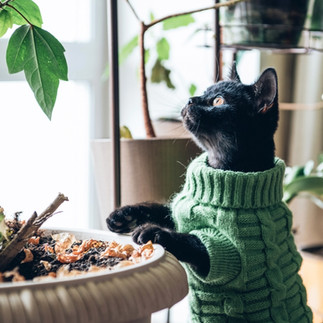The Sacred Goddess Bast: The Divine One Who Protects the Temple
- Priestess Devi Sura
- Aug 11, 2023
- 3 min read
The Egyptian Goddess Bast, also known as Bastet, is one of the most celebrated deities in ancient Egyptian mythology.

Often depicted as a lioness or a woman with the head of a lioness, she represented several aspects such as fertility, protection, pleasure, and warfare. Bast was particularly revered as a patroness of home and family, as well as a guardian against evil spirits. Throughout the centuries, she became increasingly associated with the domesticated cat and gained a reputation as a goddess of joy, music, and dance.
Bast's origins can be traced back to the Second Dynasty of Ancient Egypt, around 2890 BCE, and her worship continued until the Roman period. She was closely associated with other lioness goddesses like Sekhmet and Mafdet, and her cult center was located in the city of Bubastis in the Nile Delta.
In her earliest depictions, Bast was portrayed as a fierce lioness, symbolizing her role as a protector of the pharaoh and a deity associated with warfare. She was often depicted carrying weapons such as a staff, a spear, or a bow and arrows. As the lioness was also seen as an embodiment of the sun god Ra's destructive power, Bast was believed to possess a potent and aggressive nature when defending her territories and worshippers.
However, as the cult of Bast evolved and mythology developed, her image began to soften. She gradually transitioned into a more domesticated cat-like form, reflecting her newfound associations with fertility, sensuality, and motherhood. During the Middle Kingdom period, Bast was represented as a lioness-headed woman, often wearing an ornate, feline headdress with a sun disk, or simply as a seated cat.
The domestication of cats in Ancient Egypt played a significant role in shifting Bast's identity and solidifying her connection to these graceful creatures. Ancient Egyptians highly valued cats for their ability to control pests like mice and snakes, and they were even considered sacred companions to the pharaohs. Due to their skill in protecting homes from vermin, cats became highly revered, and Bast assumed the role of their divine patroness. Images of statues, jewelry, and amulets featuring cats or Bast with kittens proliferated during this time, emphasizing her association with motherhood, fertility, and nurturing.
The popularity of Bast extended beyond the physical realm. She was also associated with the afterlife and played a role in guiding souls to the underworld. During the New Kingdom, Bast was often depicted as a lioness-headed goddess seated upon a throne, holding an ankh (the symbol of life) in one hand and a scepter (representing her authority) in the other. Her presence in the realm of the dead served as a comforting and protective force for deceased individuals during their journey to the afterlife.
One of the most famous events dedicated to Bast was the Festival of Bastet, held annually in Bubastis. This grand celebration attracted large crowds and was characterized by music, dancing, and revelry. Pilgrims from all over the country flocked to the city, bringing offerings and seeking blessings from the goddess. Boats adorned with images of Bast sailed along the Nile, carrying musicians, dancers, and participants in elaborate costumes. The festival provided a festive and joyous atmosphere, celebrating the power and benevolence of the magnificent goddess.
In later periods of Egyptian history, the cult of Bast suffered setbacks as foreign rulers came to power, including Persians and Greeks. These new conquerors introduced their own gods and religious beliefs, diminishing Bast's influence. Eventually, the spread of Christianity in Egypt marked the decline of the worship of Bast, along with many other ancient deities.
Today, Bast continues to captivate the imagination and interest of people worldwide. Her image is often associated with mysticism, femininity, and the enigmatic nature of felines. Many individuals find both comfort and inspiration in her multifaceted character, seeing her as a symbol of protection, sensuality, and the fierce strength and grace of a lioness.
Bast remains an enduring icon, representing the revered qualities of ancient Egypt and offering a glimpse into the rich mythological tapestry of this ancient civilization.












































Comments